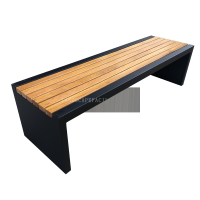Welcome to the website for landscape facilities products and knowledge.
What are the best ways to design a landscape bar counter for use in both hot and cold climates?
Creating a landscape bar counter that thrives in both scorching heat and freezing conditions requires strategic design choices. The foundation lies in material selection – opt for thermally stable composites, marine-grade stainless steel, or engineered quartz that resist expansion and contraction. Incorporate insulation within the counter structure to maintain surface temperature stability, preventing cracking in cold weather and heat retention issues during summer.
For hot climates, integrate passive cooling through strategic shading structures and light-colored, reflective surfaces that minimize heat absorption. Consider incorporating hidden cooling elements or misting systems for additional temperature control. In cold environments, embed subtle heating elements beneath weather-resistant surfaces to prevent ice accumulation and maintain comfort.
Drainage design proves critical – incorporate slight slopes (1-2 degree pitch) and concealed channels to handle both monsoon rains and melting snow. Select finishes with textured, non-slip surfaces that perform equally well when wet from rain or morning frost.
Implement modular design principles allowing for seasonal adaptations – removable windbreaks for winter, convertible shading systems for summer. Choose hardware and fittings rated for extreme temperature ranges (-40°F to 120°F) to ensure mechanical reliability.
Ultimately, the perfect all-climate bar counter balances thermal mass management with intelligent weather-responsive features, creating an outdoor entertainment space that remains functional and beautiful regardless of temperature extremes.
Related search:

Recommendation
Modern Stainless Steel Begonia Wood Park Chair Outdoor Courtyard Leisure Sun Protection Bench Long Seat